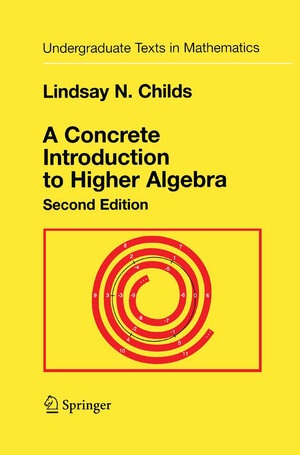
×
![Buchcover ISBN 9780387989990]()
From the reviews:
„The user-friendly exposition is appropriate for the intended audience. Exercises often appear in the text at the point they are relevant, as well as at the end of the section or chapter. Hints for selected exercises are given at the end of the book. There is sufficient material for a two-semester course and various suggestions for one-semester courses are provided. Although the overall organization remains the same in the second edition¿Changes include the following: greater emphasis on finite groups, more explicit use of homomorphisms, increased use of the Chinese remainder theorem, coverage of cubic and quartic polynomial equations, and applications which use the discrete Fourier transform.“ MATHEMATICAL REVIEWS
A Concrete Introduction to Higher Algebra
von Lindsay N. ChildsThis book is written as an introduction to higher algebra for students with a background of a year of calculus. The first edition of this book emerged from a set of notes written in the 1970sfor a sophomore-junior level course at the University at Albany entitled „Classical Algebra.“ The objective of the course, and the book, is to give students enough experience in the algebraic theory of the integers and polynomials to appre ciate the basic concepts of abstract algebra. The main theoretical thread is to develop algebraic properties of the ring of integers: unique factorization into primes, congruences and congruence classes, Fermat's theorem, the Chinese remainder theorem; and then again for the ring of polynomials. Doing so leads to the study of simple field extensions, and, in particular, to an exposition of finite fields. Elementary properties of rings, fields, groups, and homomorphisms of these objects are introduced and used as needed in the development. Concurrently with the theoretical development, the book presents a broad variety of applications, to cryptography, error-correcting codes, Latin squares, tournaments, techniques of integration, and especially to elemen tary and computational number theory. A student who asks, „Why am I learning this?,“ willfind answers usually within a chapter or two. For a first course in algebra, the book offers a couple of advantages. • By building the algebra out of numbers and polynomials, the book takes maximal advantage of the student's prior experience in algebra and arithmetic. New concepts arise in a familiar context.



